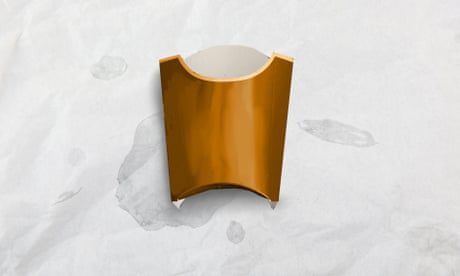- by foxnews
- 17 Mar 2025
Revealed: the dangerous chemicals in your food wrappers
Revealed: the dangerous chemicals in your food wrappers
- by theguardian
- 25 Mar 2022
- in news

Independent testing of more than 100 packaging products from US restaurant and grocery chains identified PFAS chemicals in many of the wrappers, a Consumer Reports investigation has found.
CR tested multiple samples of 118 food packaging products and found evidence of PFAS in more than half of those tested, while almost a third had levels beyond a threshold supported by CR experts and others.
In recent decades, PFAS exposure has been linked to a growing list of health problems, including immune system suppression, lower birth weight and increased risk for some cancers.
PFAS can be found not only in nonstick pans and waterproof gear but also in the grease-resistant packaging that holds food from takeout chains and supermarkets. A seemingly virtuous alternative to plastic, packaging made with PFAS often resembles paper or cardboard but salad dressing and fry oil do not leak through.
Another concern: when packaging is tossed into the trash it can end up in landfills, and PFAS can contaminate water and soil, or it is incinerated, and PFAS can spread through the air.
Health and environmental advocates have been pushing for PFAS use to be restricted, especially in items such as food packaging. In response, some fast-food and fast-casual restaurants, as well as several grocery stores, say that they have taken steps to limit PFAS in their food packaging or that they plan to phase it out.
The first known PFAS in the US was accidentally discovered in 1938 by a 27-year-old chemist named Roy Plunkett and in the decades since it and related chemicals have been added to a wide variety of products to make them resistant to heat, water, oil and corrosion.
Today, these practically unbreakable compounds, created when the elements carbon and fluorine are fused, can be found in the air and the water, as well as in our bodies, our food, and our homes.
Identifying the exact type of PFAS in a product is complex: there are more than 9,000 known PFAS, yet common testing methods can identify only a couple dozen.
The results of the tests are not representative of all the packaging from a retailer, and packaging may have changed since CR conducted them.
CR looked at retailers that claimed to be phasing out PFAS, including Cava, Chipotle, Panera Bread, Sweetgreen, and Whole Foods Market.
In addition, research from the EPA and elsewhere confirms that many newer PFAS chemicals, like their older cousins, will probably remain in the environment almost indefinitely and will pose health risks, especially to infants.
Full Consumer Reports food packaging test results
These results show levels of total organic fluorine, a measure of PFAS, in 118 food packaging products gathered from large fast-food and fast-casual restaurants, as well as supermarkets. PFAS in food packaging have been linked to potential harms to human health and the environment. Products with two red squares have 100 parts per million organic fluorine or more. Starting next year, California will ban food packaging that exceeds that level. Products with one red square have 20ppm organic fluorine or more, a stricter standard for food packaging set by Denmark. CR supports that lower cutoff.
- by foxnews
- descember 09, 2016
Rare artifacts representing America's 250th birthday will be featured in major exhibition
Rare artifacts will be featured in the "Give Me Liberty" exhibit at the Virginia Museum of History & Culture in Richmond to commemorate America's upcoming 250th anniversary.
read more


